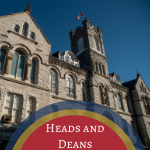.png)
QSSET or Queen's Survey of Students' Experience of Teaching is the updated version of USAT or the University Survey of Student Assessment of Teaching. This survey was first implemented in the Fall term of 2020 and serves as the official survey for capturing the learning experience at Queen's. It was developed over a period of several years and continues to be refined in consultation between the University and the Queen's University Faculty Association (QUFA). The content of the survey is based on the criteria outlined in Article 29 of the Collective Agreement between the University and QUFA.
What’s new in QSSET?
2025 update
Enhancements to the data collection process were introduced in 2025:
- Transitioning QSSET to a single-day administration, replacing the original week-long window. This decision was informed by a pilot study that demonstrated narrowing the window of time improved response rates while ensuring meaningful student engagement. We recognize that this change may pose challenges for some programs, particularly asynchronous online ones, and we will monitor its impact closely.
- Reinforcing the role of Class Student Representatives in conducting the survey during designated class times. This adjustment aims to improve response rates and ensure students have a structured opportunity to participate in providing feedback.
For instructors concerned about potential limitations, we encourage exploring additional methods for gathering evidence of teaching effectiveness. The QSSET Subcommittee remains committed to evaluating the impact of these changes and adjusting processes as necessary to support diverse teaching and learning contexts,
Any questions can be addressed to qsset@queensu.ca.
The survey was launched with several features which differentiate it significantly from the previous measurement tool:
- QSSET is administered entirely online through Scantron technology, unlike the paper-based instrument used in the past.
- The QSSET moves away from the idea that it is a formal assessment of an instructor's teaching ability and research expertise and toward a registering of the student's experience of the learning environment. Assessment implies years of developed expertise in a particular area and a judgment by peers or senior academics, whereas a survey of experience attempts to record the immersive, direct encounter of a student with learning in a classroom, in an online environment, or a blended modality.
- The survey is divided into four sections: Student, Instructor, Course and Course Infrastructure.
- The electronic format introduced more extensive opportunities for students to provide open-ended written comments in each section. The material in these sections is viewed only by the instructor and can be used for reviewing formative aspects of teaching and learning.
- There are no averages or means for individual instructor questions, and there are no measures against other instructors in the academic unit.
- The QSSET is overseen by a standing committee which will report to the Joint Committee to Administer the Collective Agreement (JCAA) on any issues relevant to the running or the content of the survey.
- While the USAT allowed individual questions to be added by the instructor to the core set of questions, these questions were not reviewed or approved by any external body. The result was an unevenness in the quality of the questions and sets of questions that often were either too narrow or too wide ranging. The standing committee overseeing the QSSET will assess and approve additional questions for potential inclusion in the survey.
- The survey includes an opening statement indicating that students may not make comments that are disrespectful, demeaning, discriminatory or harassing in nature. Surveys containing such comments will be discarded and form no part of the evaluation process.


